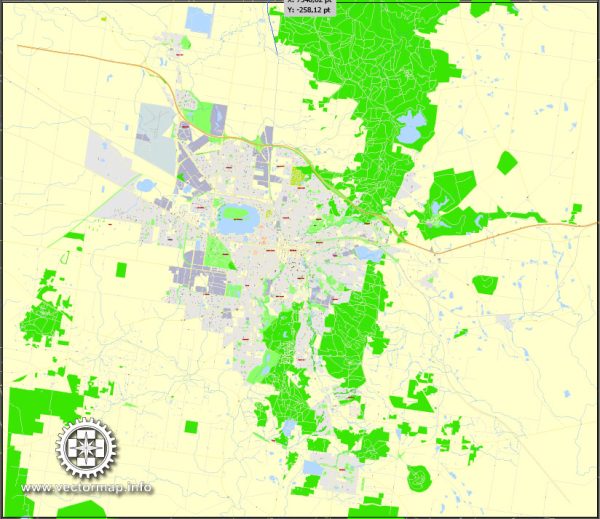The history of urban development in Ballarat, Australia, is a fascinating story that reflects the city’s growth from a small gold mining town to a thriving regional center. Here is an overview of the key milestones in Ballarat’s urban development:
- Early Settlement and the Gold Rush: Ballarat’s urban history begins with the discovery of gold in the area in the 1850s. This led to a rapid influx of people, turning the region into a significant mining town. The first settlement was unstructured and centered around the goldfields, resulting in a makeshift and often chaotic urban environment.
- Eureka Rebellion: The Eureka Rebellion of 1854 was a significant event in Ballarat’s history. Miners protested against oppressive mining licenses and demanded democratic reforms. The rebellion was a catalyst for change, leading to increased political representation and the eventual establishment of local government in the region.
- Urban Planning and Development: As Ballarat continued to grow, urban planners began to design the city with a more structured approach. Streets were laid out in a grid pattern, and public buildings, churches, and commercial establishments started to take shape. The city’s architecture from this period reflects Victorian-era influences.
- Infrastructure Development: The development of essential infrastructure, such as roads, railways, and bridges, was crucial for the city’s growth. The Ballarat Railway Station, built in 1862, was a significant transportation hub, connecting the city to Melbourne and other parts of Victoria.
- The Decline of Mining: The gold rush eventually declined, impacting the city’s economy. However, Ballarat diversified its industries, including manufacturing, agriculture, and education. This economic diversification played a vital role in stabilizing the city.
- Cultural and Educational Institutions: Ballarat boasts various cultural and educational institutions, including the Ballarat Fine Art Gallery, which opened in 1884, and the University of Ballarat (now Federation University), established in 1870. These institutions have contributed to the city’s cultural and intellectual life.
- Heritage Preservation: Ballarat has taken significant steps to preserve its historic architecture and landmarks. Many Victorian-era buildings have been restored and are now used for various purposes, contributing to the city’s charm and character.
- Suburban Expansion: Throughout the 20th century, Ballarat continued to expand its suburbs, accommodating a growing population. Modern infrastructure and amenities were added to meet the needs of the community.
- Contemporary Development: In recent years, Ballarat has witnessed ongoing urban development. The city has experienced a resurgence, with an emphasis on cultural events, tourism, and services. New housing developments and retail spaces have been established, while efforts have been made to maintain the city’s historical character.
Today, Ballarat is a vibrant regional center with a rich history that is celebrated through its preserved heritage buildings, museums, and events. Its ongoing urban development showcases the city’s commitment to both honoring its past and building a sustainable and prosperous future.


 Author: Kirill Shrayber, Ph.D.
Author: Kirill Shrayber, Ph.D.